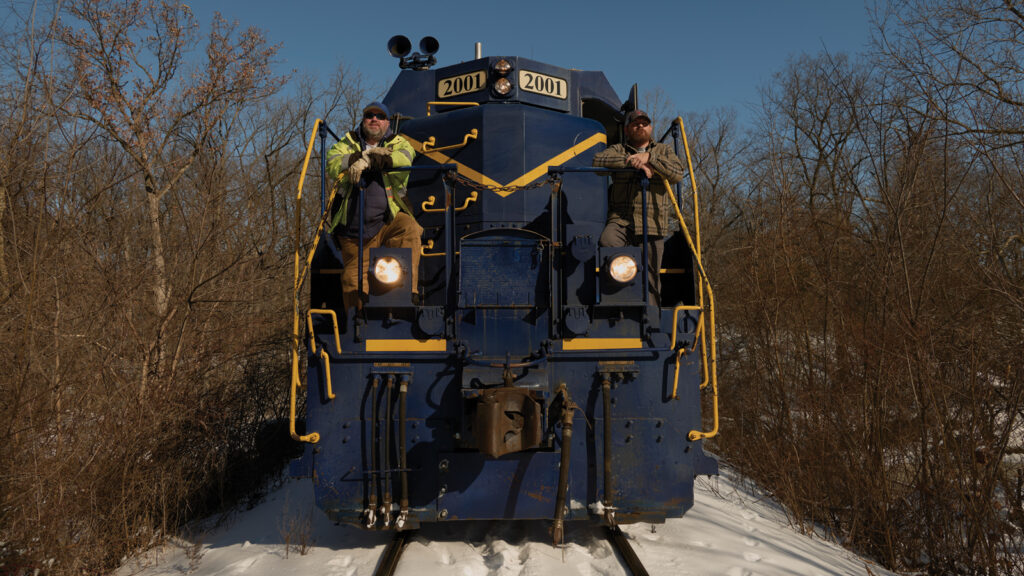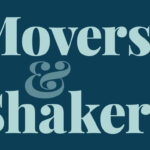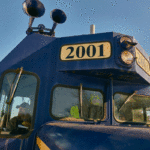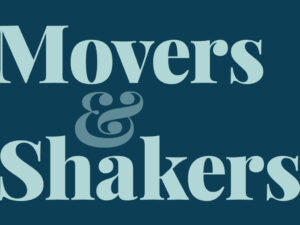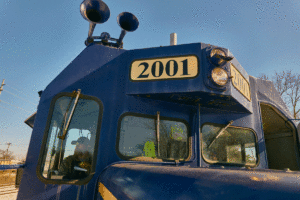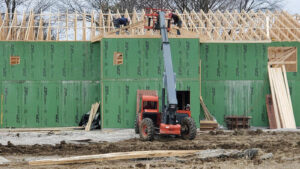Matthew Sabath and James Day are Railroad Operators for the City of Columbia / COLT Railroad.
CBT’s “Day in the Life” series features Columbia pros (and amateurs) who do their part to keep the globe spinning and make life better for the rest of us — often in ways we don’t realize. We especially appreciate opportunities to tell our readers more about individuals and organizations that most of us aren’t familiar with.
Please give us a description of your responsibilities. We are railroad operators for the Columbia Terminal (COLT) Railroad, which is owned by the city of Columbia. We both wear lots of different hats at work, but mainly we run the train to bring down railcars from our interchange with Norfolk Southern Railroad at Centralia, and switch out rail served customers here in Columbia. We also inspect and maintain twenty miles of railroad tracks, and related infrastructure. We are also tasked with administrative duties.
What’s the difference between a conductor and an engineer? A train conductor is primarily responsible for managing the overall operations of a train, including safety, railcar management, working the switches, and communication with the engineer while switching railcars. A locomotive engineer is solely responsible for driving the train and operating its controls, focusing on navigating the tracks and maintaining speed.
What a cool thing! You get to “drive” a train. What’s that like?
James: It’s a big responsibility. There are a lot of factors we take into consideration while running the train, such as how many railcars are being pulled, the track profile, speed limits, weather, and other items. This way we can operate and stop the train in a safe manner.
Tell us about your career aspirations. What did you want to be when you were growing up and when did you find your career path?
Matthew: Personally, as a young boy I always wanted to be a locomotive engineer. While it took a while to get there working other jobs along the way, I was able to get hired by the Columbia Terminal back in December 2003, and I have been here now for twenty-one years.
Tell us about your work experience prior to your current position.
Matthew: I was working as a cement truck operator before I started working for the COLT.
James: I worked for Norfolk Southern Railroad as a conductor and then worked briefly for the city at the power plant before I transferred over to the COLT Railroad.
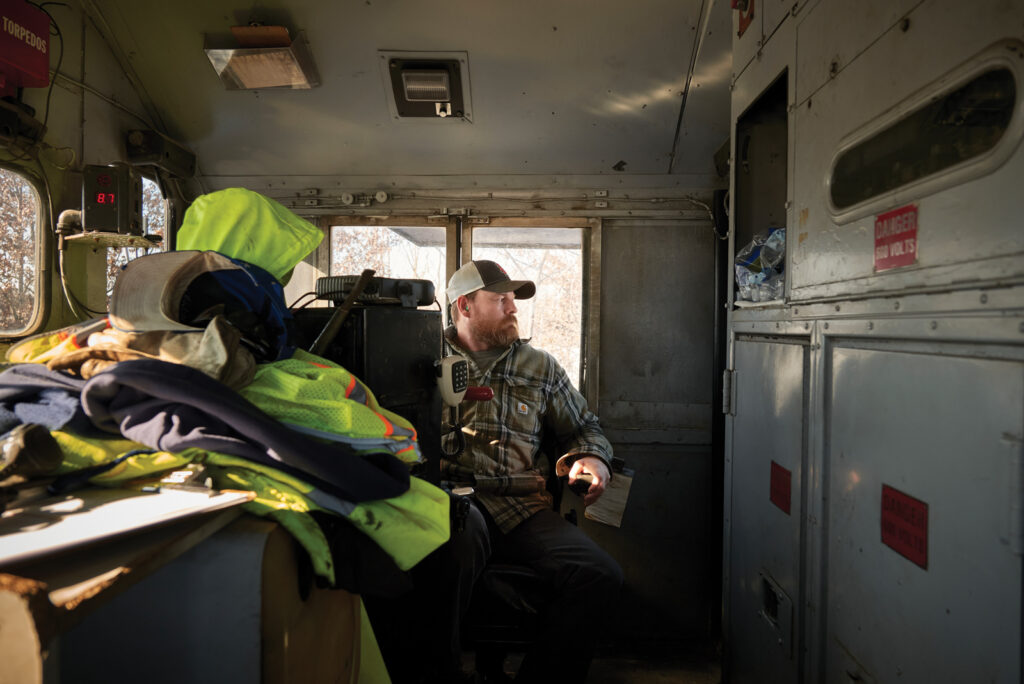
What attracted you to working for the city of Columbia?
Matthew: Well obviously when I applied, it was to work for the railroad itself. But now that I’ve been an employee for over twenty-one years, I appreciate the benefits that come with working for the city. And there’s pride in knowing I’m helping Columbia continue to grow and prosper.
Let’s get the day started. What is your wake-up time and your morning routine – your “getting ready for the day” routine?
Matthew: I’m usually get up around 6:15 a.m., and I’m out the door at 7. I arrive at the office and pour that first cup of coffee!
When does your workday start, and what are the first things on a typical daily to-do list? Our start time is 7:30 a.m. And every day we start with a morning briefing where we go over the plans for the day and have a safety discussion. Then a second cup of coffee!
Since the two of you work as a team, how does a typical day work for you?
Matthew: Most days when we run the train, James will work as the engineer, and I work as the conductor, keeping track of the railcars, communicating with customers, and working the ground as needed. Since we work together frequently, we’ve learned to work together as a team running the train. Also, we trust each other’s ability to do the job correctly and safely.
Okay, so there might not be such a thing as a “typical day.” We imagine there are all sorts of distractions and variables. But what, in your experience, would be a “smooth” day?
James: Going up to Centralia to grab our railcars for the day and having the railcars we’re looking for all together ready to pull. Then we come back to Columbia, switch our customers out with no issues, and get back to the office to do the paperwork.
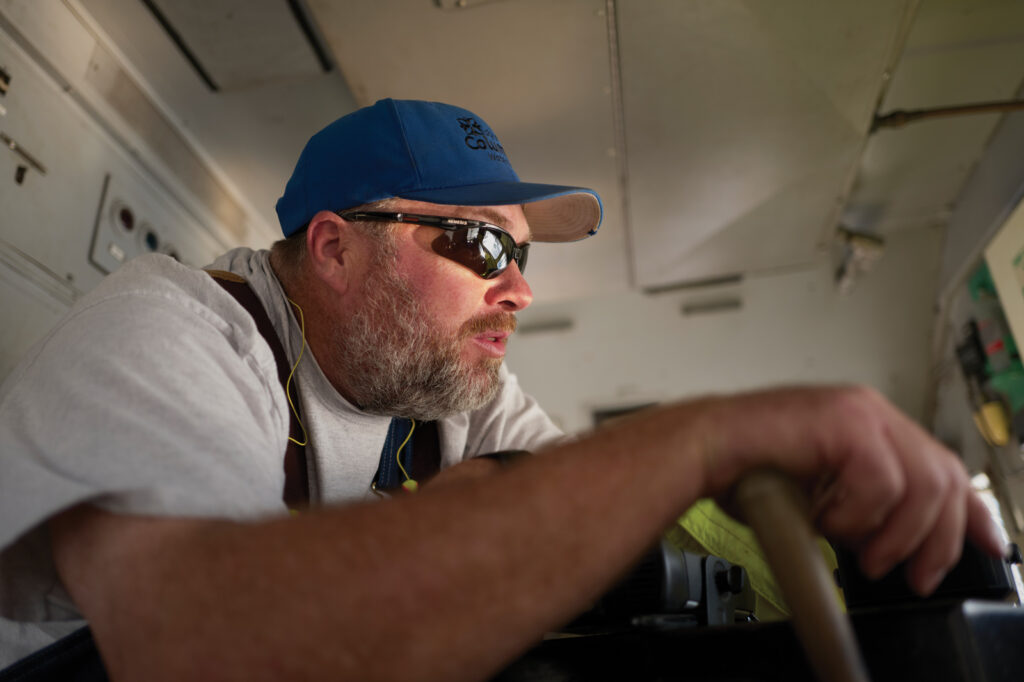
What’s the first distraction that came your way today? Snow! We have to take weather into consideration with our operations. Snow and ice can build up on the switches and has to be cleared out before we can throw them properly.
Give an example of something you are proud of at the COLT Railroad?
Matthew: I’m proud of the fact that the Columbia Terminal Railroad has received the Jake Safety Award for more than twenty straight years. The award is given by the American Short Line and Regional Railroad Association to recognize short line railroads that demonstrate exceptional safety performance; essentially, it honors the safest short line railroads in the industry.
THIS is non-negotiable. You won’t be distracted from doing THIS. What is THIS? Safety. We always consider safety with every move we make on the railroad, both for ourselves, and the public. Trains are big, and don’t stop on a dime. So being safe is an important part of the job.
COLT RR and Transload is something of a “hidden gem”, if that’s possible in a city our size. But what are some of the things about COLT and the transload facility that most Columbians might not know about? (And what is the transload facility?)
Matthew: Well, ironically, the most common question I get, when I tell people I work for the COLT is, “Columbia has a railroad?” I believe this is because our operations are north of the city, and we run during the day Monday through Friday, while most Columbians are at work. The COLT Transload is a warehouse and transloading operation owned and operated by the city of Columbia. This allows businesses in Columbia and mid-Missouri without direct access to a railroad to have railcars delivered and unloaded here at the Transload, then loaded onto trucks for delivery to various business locations.
So what time is lunch? What are you having? We don’t have a set time for lunch. We tend to grab a quick bite whenever we have a chance, usually while riding on the train.
What do your friends not understand about what you do at the COLT?
Matthew: Well I guess one thing is, if we have an issue on our railroad, there’s no one else that’s going to come help us. When it snows, we clear the tracks and switches. When a tree falls on the tracks, we cut it up and clear it off. When there’s a flat on one of our trucks we fix it. We are pretty self-sufficient that way. Every day has challenges, but it does make the day go by quicker.
What time is your workday over? Normally our workday is over at 3:30 p.m. However, there are many days when we work until the job is done.
